Contents
Figs are not only a delicious tropical fruit, but also very healthy. It contains important trace elements for the human body. It contains vitamins and fiber. Homemade figs are no worse than those grown in the garden. The fruit grown in such conditions does not lose its useful properties and taste.
Cultivation from seeds
The fig tree can be grown by seed propagation. For this, well-washed and dried seeds are used. Sowing is carried out in early spring. The soil should contain sand, peat and leafy soil, and be light in texture.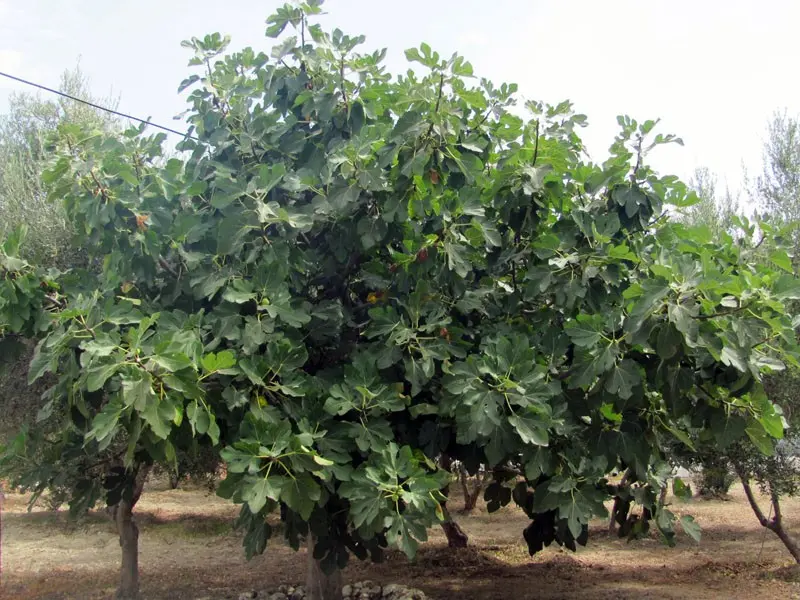
If cultivation occurs by seeds, then they are deepened by 3 cm, after which they are watered. The containers are covered with glass or a plastic bag, a film. When growth begins, the cover is removed for several hours, then removed completely.
The grown seedlings are transplanted into separate containers. Breeding by this method is less popular than propagation by cuttings.
Video “Growing from seeds”
From the video you will learn how to grow figs from seeds.
Cutting
You can grow figs indoors using cuttings, the main thing is to choose them correctly and create favorable conditions for further growth.
When picking up a branch for cuttings, it is necessary to take it from the bush that previously “pleased” with its fruits. It is best to break off the branch.
They should be rooted in the middle of winter, namely in late January or early February. It is important not to miss the moment between the shedding of foliage and the beginning of fouling with young shoots. In this case, rooting will occur without any problems.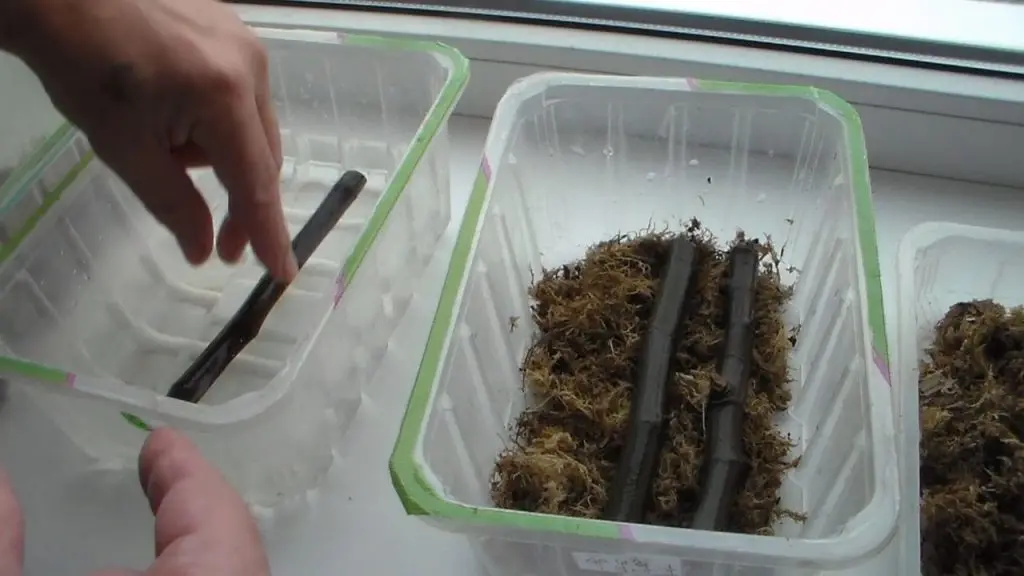
The stalk is taken 15 cm high and with 3-4 buds. The plant must be in the growing season. The cut point is allowed to dry, for this you need to place it in a cool room for 7-8 hours.
Reproduction in this way has several features:
- in the lower part of the handle, several longitudinal cuts or scratches are made for better root formation;
- each is planted in a separate glass;
- just like the stone, the stalk deepens 3 cm into the ground;
- you can use river sand at the beginning of planting;
- should be watered with warm water, and then covered with a jar.
If desired, the rooting process can be accelerated; for this, indoor fruit-bearing figs are placed in a home greenhouse. There it is necessary to maintain the temperature of the soil up to 25 ° C.
Using cuttings, you can put the branches not only in the sand, but also in a jar of water and leave them until the first young roots begin to appear. This is convenient, since the roots are clearly visible in transparent containers. When they appeared, transplantation should be carried out so that the figs are already growing in a pot, preferably in a ceramic one. The soil is selected not too oily, suitable for drainage, containing leafy humus, peat, soddy soil and river sand.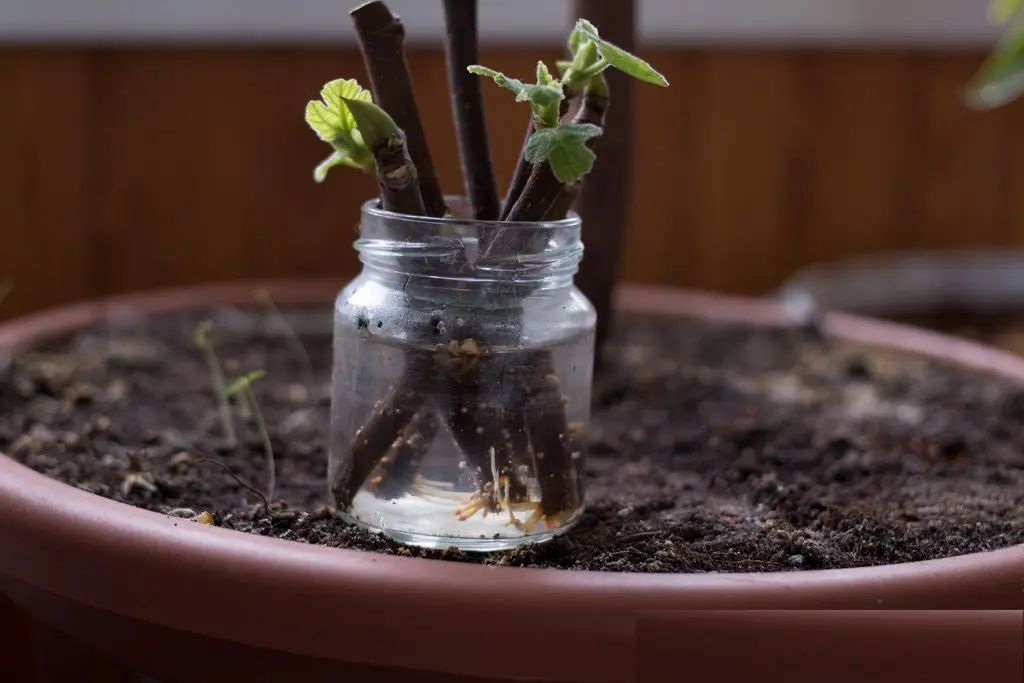
For a good result, germinated figs on the windowsill require a pot of 6-8 liters in the future.
Rules for the care of indoor figs
It is possible to grow figs at home with proper care for them. The plant should be protected all year round and take into account some features.
In the summer, the future fruit must be sprayed with warm water. For irrigation, pre-settled water is used. If there was not enough moisture, the tree dries up, this is evidenced by the fall of the leaves. As a rule, with frequent spraying, it is possible to protect the plant from spider mites.
When the fruiting stage begins, the amount and volume of watering is reduced, this is done so that future fruits are not too watery. Like all “immigrants” from the subtropics, figs in room conditions need a dormant period.
In this time period, the plant is placed in a cool place where the temperature ranges from 0 to +15 degrees. If there is no such possibility and a suitable place, wintering figs at home can take place away from the heaters in the room.
Figs in the room do not require special lighting. The period of winter dormancy falls at the end of autumn and until the middle of winter. Leaves fall from the trees, and the amount of watering is significantly reduced. Moisture is required so that the earth does not dry out at all.
In order for the care to be correct and to prevent the early awakening of the kidneys, the plant at rest is watered with cold water. After waking up, as evidenced by swelling of the buds, the figs are taken out into the light, regular watering begins, in general, they provide appropriate care.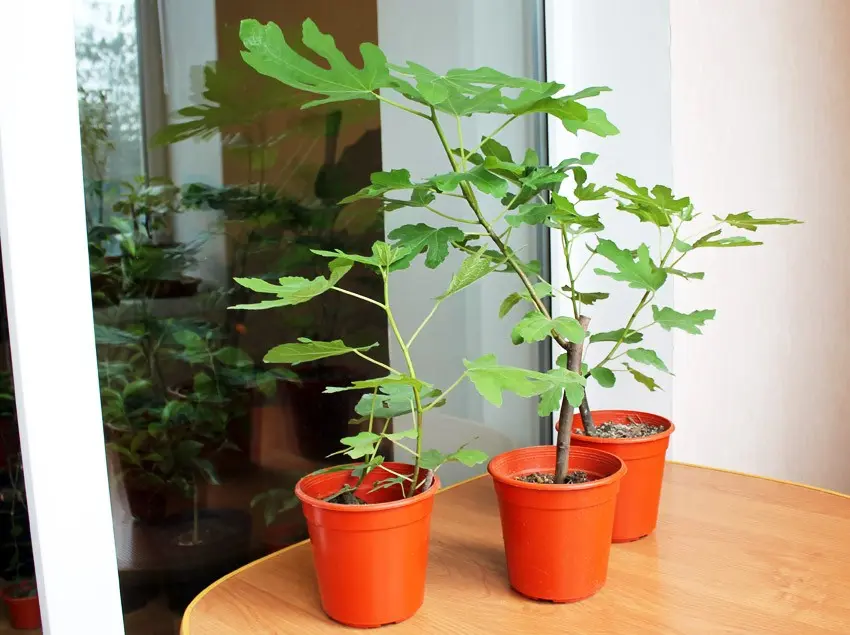
At the same time, it is time to feed with special mixtures. Cultivated figs for good fruiting are “fed” with nitrogen. It is very important that this particular fertilizer be the first. At each transplant, indoor figs must be fertilized.
During the period of swelling of the kidneys, the fig needs additional feeding from phosphates. Only during “sleep” figs grown at home do not need additional trace elements.
This should be the main care in order to grow tasty and healthy fruits.
Transfer
Understanding how to grow figs at home is very important, but there are a number of rules for transplanting them.
When spring comes, and frosts give way to pleasant warmth and sunny days, a container with figs is taken out to the balcony or garden. Since the root system of the “young growth” grows quite quickly, they must be transplanted annually. This procedure is carried out until the leaves appear.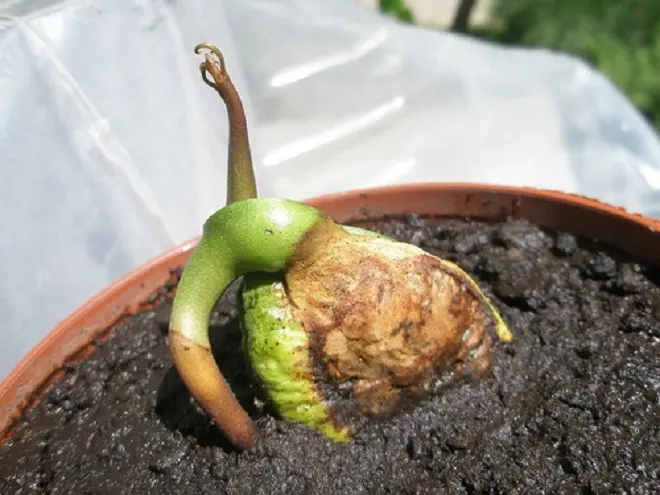
When the trees are 7 years old, they begin to replant every 3 years. The next pot should be several centimeters larger than the previous one. Too much area for transplanted plants should not be allocated. In this case, the root system begins to grow rapidly and it will be difficult to maintain a good yield.
A layer of drainage must be poured at the bottom of the pot. When transplanting, the root neck should remain on top, and the plant itself should be placed in a bright place. An important process is the successful formation of the crown, this gives a good and high-quality harvest.
Crown formation
The crown is formed before the swelling of the kidneys. Leave 3-4 branches, the rest are cut off. Upon reaching a height of 20 cm, the top begins to pinch. This is done so that the side branches grow more. They, in turn, are shortened by a third of their own length, so that the lower shoots grow stronger.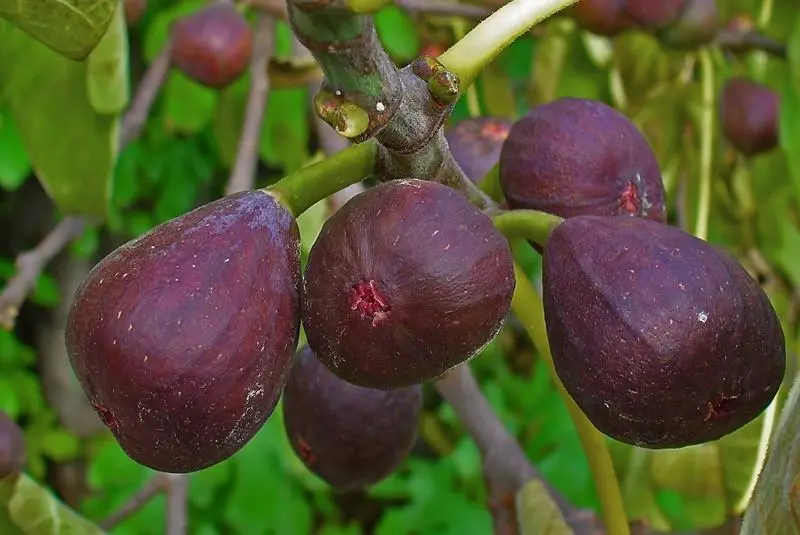
Cut should be those kidneys that are directed to the center of the crown. If this procedure is done correctly, then the crown of the tree will turn out to be beautiful, from 3-4 vertical branches and side shoots.
The fan-shaped crown looks very nice. Such a fig in the apartment pleases the eye, and favorably complements the interior design. The tree not only becomes decorative, but also its fruitfulness increases. For this form, pinching is started from the upper kidney.
Those shoots, the direction of growth of which is directed inside the crown, are removed. Leave horizontal branches. They give good yields. In order to get a fan-shaped shape, two main parallel horizontal branches are left.
A cut is made above the kidney, which increases the number of fruiting shoots. If you follow simple rules, then the home bush, although it does not turn into a beautiful flower decorating the apartment, but it bears fruit in the second year, and then 1-2 crops annually.
Varieties for home growing
Before planting, you need to decide on a variety that can grow successfully. As a rule, it is recommended to choose a self-fertile undersized species. There are three main types of pollination:
The most common and suitable are the following types:
- Violet Sukhumi;
- Kadota;
- Sochi No. 7;
- Solar.
You can try to grow the Crimean Black Fig, but it is more suitable for the garden area.
Protection against pests
Growing figs at home is an infrequent occurrence, which is why fruits and seedlings are exposed to a variety of diseases and pests.
One of the most common is the spider mite (which develops during the heating season, during the period of dry and warm indoor temperatures). If pests are found on a tree, the affected areas are first washed with cold water. Then the leaves of the seedling and the trunk are sprayed with an actellik solution.
It is recommended to treat figs and the air around them with water every day, creating natural humidity conditions. This process should be repeated every week.
Another problem can be a fungal disease (coral spotting). The main point of manifestation are red spots on the stems. Having discovered this, the damaged shoots are immediately cut off (to avoid further spread) and treated with a solution of potassium permanganate, foundationol or Bordeaux liquid.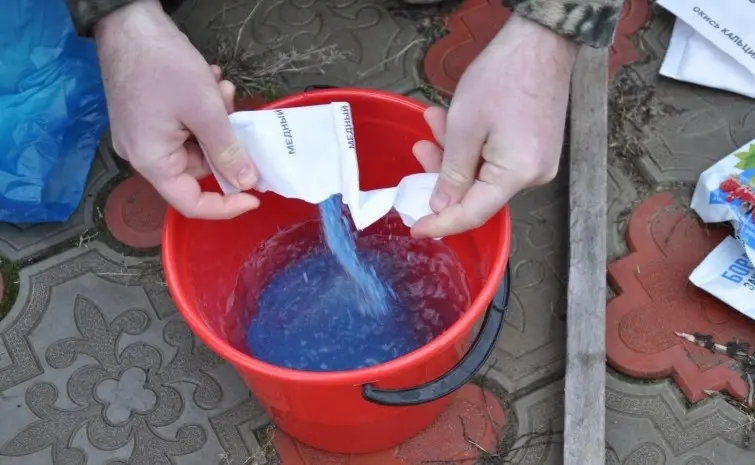
It is important to know how to store figs in order to enjoy their taste and useful qualities for as long as possible. The fruit itself is very tender and prone to rapid fermentation. Freezing is one option to extend storage.
Figs grown at home can be dried. There is nothing complicated about how to dry figs. To do this, they take a ripe fruit, cut it in half, lay it out to dry, cover it with gauze, expose it to the sun’s rays.
Drying figs at home is very simple and does not take much time and effort. Interestingly, dried figs do not lose their beneficial properties, but are also rich in fiber, potassium, calcium, and iron.
And let this bush not bloom in the usual way and decorate the interior with “outlandish” flowers, but it will please you with tasty, and most importantly, healthy fruits.
Video “Three stages of cultivation”
From the video you will learn how to properly engage in the cultivation of figs.









